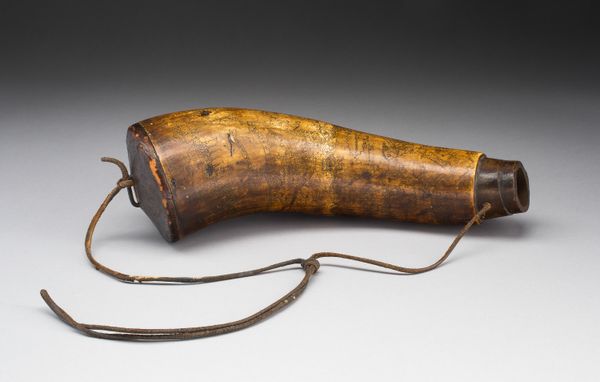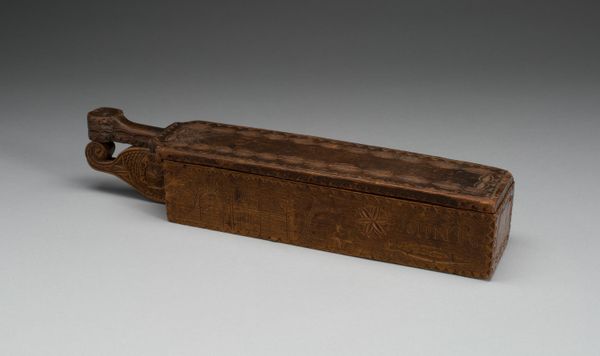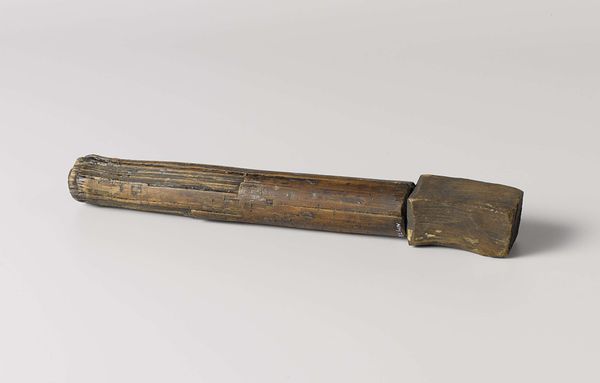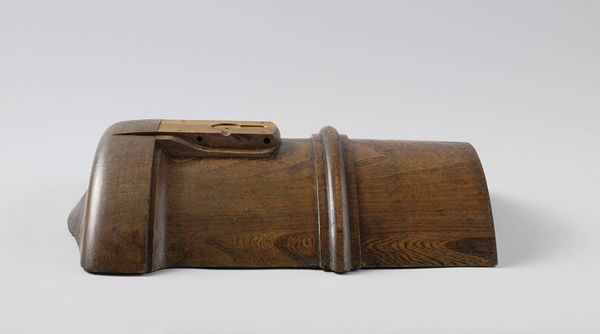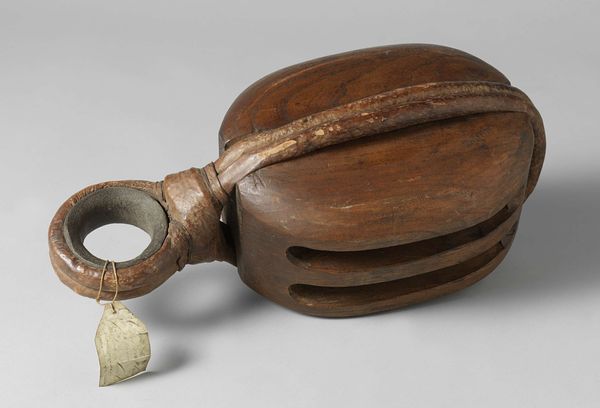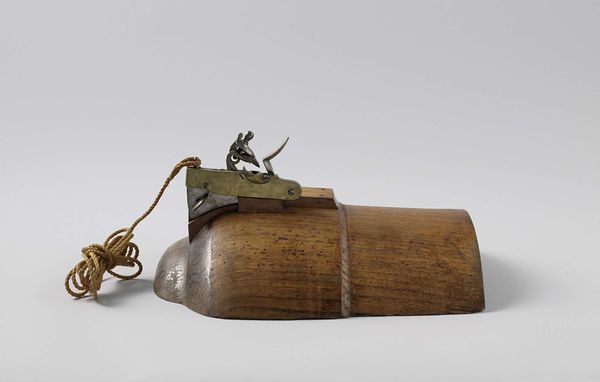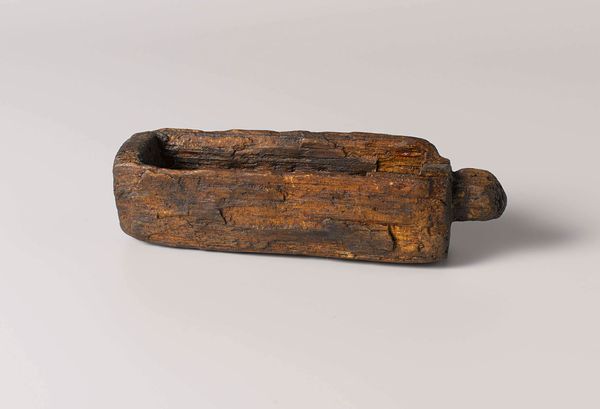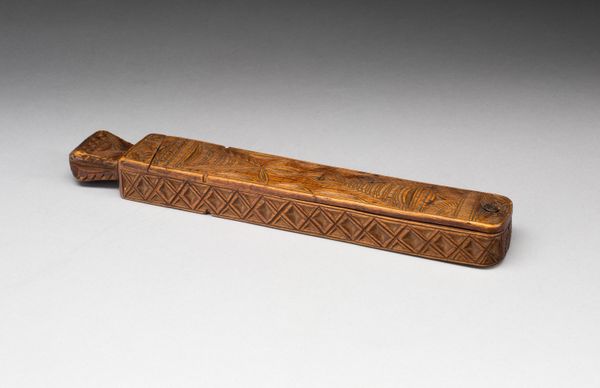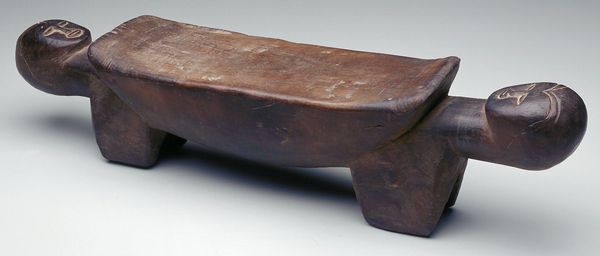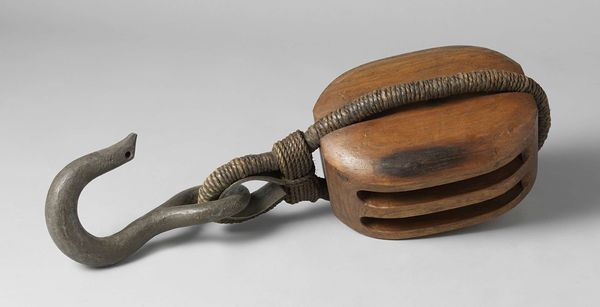
carving, sculpture, wood
#
african-art
#
carving
#
sculpture
#
sculptural image
#
sculpture
#
wood
#
musical-instrument
Dimensions: 98 x 20 in. (248.92 x 50.8 cm)
Copyright: Public Domain
Curator: Let's explore this intriguing object: a slit drum, or garamut, from around the 20th century, currently residing here at the Minneapolis Institute of Art. The garamut is crafted from wood, meticulously carved with striking designs. Editor: My immediate reaction is one of tactile appreciation. Look at the patina, the sense of weight implied by the wood itself. And the deep carving gives the whole piece a rhythmic complexity even before it’s struck. Curator: Indeed. These drums were and are more than just musical instruments; they’re deeply embedded in the social fabric of communities in places like Papua New Guinea, used for signaling, announcing ceremonies, and accompanying dances. The carvings are not merely decorative either. They communicate stories, lineages, and cultural identity. Editor: From a formal perspective, consider how the artist has treated the surface. The repeating motifs—spirals and stylized figures—create a sense of visual harmony. The contrast between the smooth, uncarved areas and the dense, intricate carvings guides the eye along the drum's cylindrical form. There is almost a hypnotic, echoing quality. Curator: That echoes the drum's performative function and communal value, absolutely. The sound carries across distances, unifying communities. Furthermore, the drum itself can be seen as a representation of power and voice within that community. Access to the drum, its creation, and its usage are often carefully managed. Editor: Note, too, the sculptural extensions at each end, creating these almost creature-like handles. They transform a purely functional object into something bordering on the totemic, animating the wood itself. Curator: I find that animism incredibly important, that fusion of spiritual, natural and cultural elements. The choice of wood itself has symbolic importance; often certain trees are associated with specific spirits or clans. And of course, the process of carving itself is often accompanied by ritual and respect. Editor: So, by examining its form and texture, we understand its function as well? It truly bridges aesthetic intention with utility. Curator: Exactly, we are touching upon art, culture and community, resonating beyond simply observing an object in a gallery. Editor: Seeing the layers of history and intention…it’s genuinely profound.
